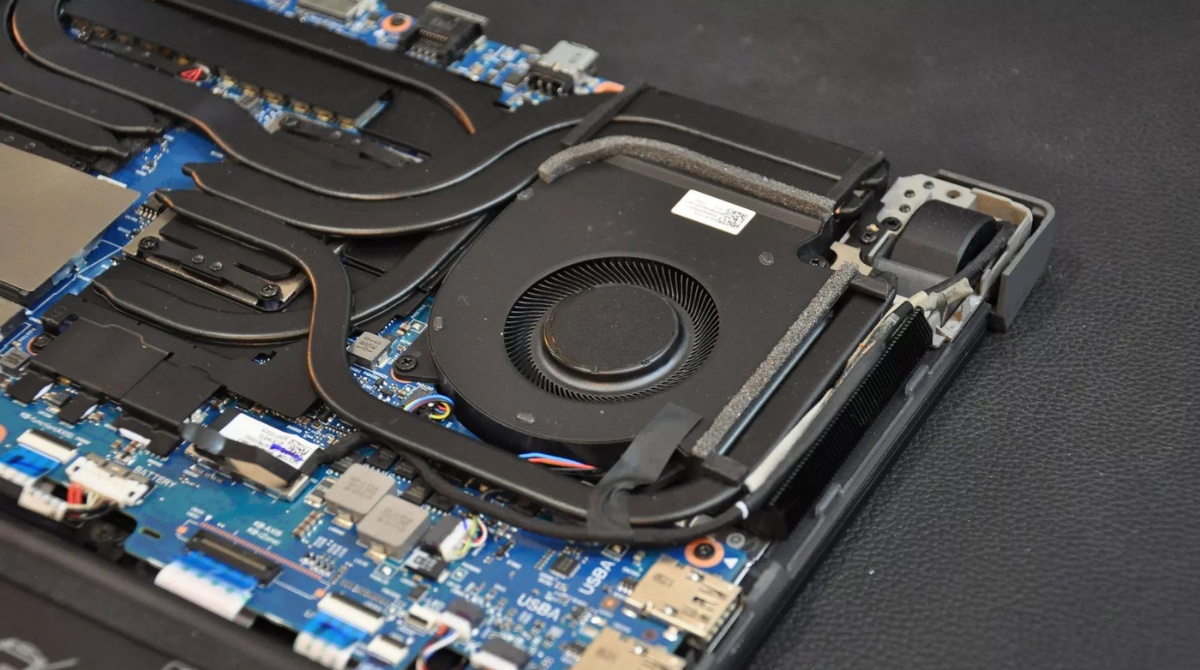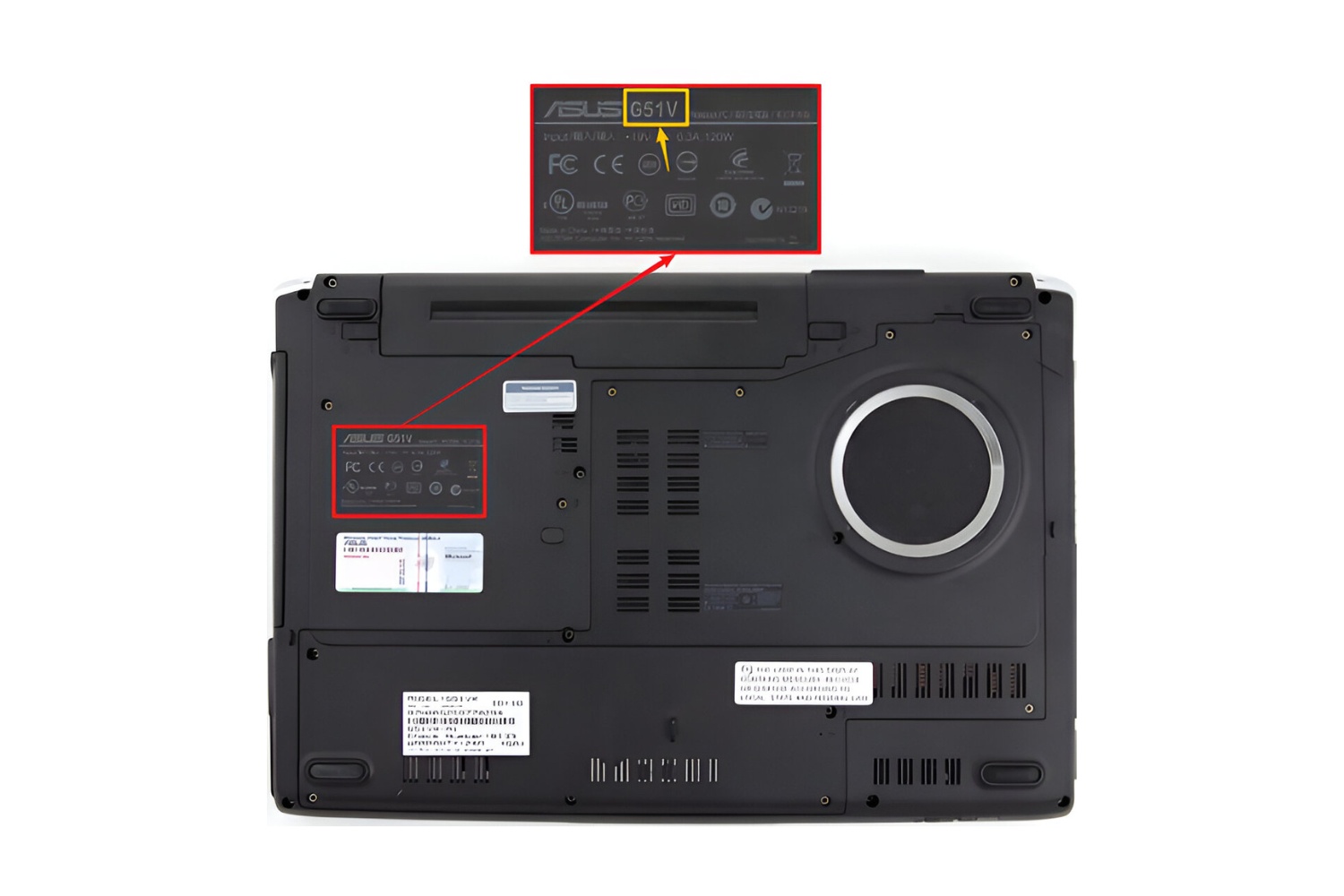Introduction
Welcome to this guide on how to start your ASUS Ultrabook in Safe Mode. Whether you are troubleshooting an issue, removing stubborn malware, or performing system maintenance, Safe Mode is a powerful tool that allows you to start your computer with minimal resources and only essential services running. This helps in identifying and resolving any software conflicts or errors that may be causing problems with your Ultrabook.
Safe Mode is a diagnostic mode in Windows that starts your computer with a limited set of drivers and services, preventing unnecessary software from running. It provides a clean environment that allows you to troubleshoot and fix issues without the interference of third-party applications or drivers. Booting your ASUS Ultrabook in Safe Mode can be a useful step when regular booting fails or when you need to access certain features or tools that are only available in Safe Mode.
Starting your ASUS Ultrabook in Safe Mode can be necessary for a variety of reasons. It can help you diagnose and resolve issues such as blue screen errors, driver conflicts, software compatibility problems, and other system-related errors. Safe Mode also enables you to uninstall problematic software or drivers, delete stubborn malware or viruses, and perform system maintenance tasks.
In this guide, we will explore different methods to start your ASUS Ultrabook in Safe Mode. These methods include using the advanced startup options, the Shift + Restart combination, the System Configuration utility, the F8 key, as well as using a Windows installation disk or recovery drive. Follow the instructions carefully, and you’ll be able to access Safe Mode on your ASUS Ultrabook in no time.
What is Safe Mode?
Safe Mode is a diagnostic mode in Windows operating systems that starts your computer with a minimal set of drivers, services, and programs. It is designed to help you troubleshoot and fix issues that may be preventing your computer from functioning properly. When you start your ASUS Ultrabook in Safe Mode, it loads only the essential components needed for the operating system to run, while disabling unnecessary startup items and third-party applications.
In Safe Mode, your Ultrabook operates with basic graphics and a limited number of software features. This stripped-down mode allows you to identify if the issue you’re experiencing is caused by a faulty driver, conflicting software, or any other software-related problem. By only loading essential components, Safe Mode provides a clean and stable environment for troubleshooting.
When you start your ASUS Ultrabook in Safe Mode, you may notice that the desktop appears different. The screen resolution may be lower, and certain visual effects may be disabled. Additionally, network connectivity might be limited, and audio drivers may not be functioning. These limitations are intentional and aim to prioritize stability and troubleshooting capabilities over cosmetic features.
Safe Mode can be especially helpful when your ASUS Ultrabook encounters blue screen errors, also known as the “Blue Screen of Death” (BSOD). These errors often indicate a severe software or driver problem that is causing the system to crash. By starting your computer in Safe Mode, you can narrow down the cause of the blue screen error and take appropriate steps to address it.
Safe Mode also allows you to uninstall problematic applications or drivers that may be interfering with your computer’s normal operation. If you’re facing issues after installing a new software or driver, starting your Ultrabook in Safe Mode can help you remove the problematic software and restore your computer to a working state.
Another advantage of Safe Mode is its usefulness in removing stubborn malware or viruses. By booting your ASUS Ultrabook in Safe Mode, you can prevent malicious software from running and gain better control over scanning and removing threats. Safe Mode provides a secure environment to run antivirus programs and perform thorough scans, making it easier to eliminate malware that may be affecting your Ultrabook’s performance or privacy.
Reasons to Start Your ASUS Ultrabook in Safe Mode
There are several compelling reasons why you might need to start your ASUS Ultrabook in Safe Mode. Let’s explore some of the main scenarios where Safe Mode can be incredibly useful:
- Troubleshooting System Errors: If you’re facing frequent crashes, freezes, or encountering error messages on your ASUS Ultrabook, starting it in Safe Mode can help you determine if the issue is caused by a problematic driver, software conflict, or any other system-related error. By starting in Safe Mode, you can isolate the problem and take appropriate troubleshooting steps to fix it.
- Fighting Malware and Viruses: If your Ultrabook is infected with malware or viruses that are difficult to remove, Safe Mode can be a powerful tool for fighting back. By running your computer in Safe Mode, you can prevent malicious software from launching and gain more control over scanning and removing threats. This can increase the effectiveness of your antivirus software and help remove stubborn malware that may be causing performance issues or compromising your privacy.
- Removing Problematic Software: Have you recently installed a piece of software or driver that is causing issues on your ASUS Ultrabook? Starting in Safe Mode allows you to uninstall troublesome software without interference from startup items or conflicting applications. Safe Mode ensures that only essential drivers and services are running, making it easier to pinpoint and remove problematic software that may be causing crashes or compatibility issues.
- Resolving Blue Screen Errors: Blue screen errors can be frustrating and disruptive. When your Ultrabook encounters a blue screen error, starting it in Safe Mode can help you identify the underlying cause of the problem. By isolating any faulty drivers or conflicting software, you can take appropriate action to resolve the issue and prevent future blue screen errors from occurring.
- Performing System Maintenance: Sometimes you may need to perform system maintenance tasks on your ASUS Ultrabook, such as defragmenting the hard drive, updating drivers, or troubleshooting software conflicts. Safe Mode provides a stable environment to perform these maintenance tasks effectively, as it disables unnecessary startup items and ensures a clean boot. This can help optimize your Ultrabook’s performance and keep it running smoothly.
Starting your ASUS Ultrabook in Safe Mode gives you the opportunity to diagnose and resolve various issues that may arise. It allows you to troubleshoot system errors, fight malware, remove problematic software, resolve blue screen errors, and perform necessary system maintenance tasks. Safe Mode is a valuable tool that can help you recover your Ultrabook’s functionality, stability, and security in a controlled environment.
Method 1: Using the Advanced Startup Options
The Advanced Startup Options menu in Windows provides a convenient way to start your ASUS Ultrabook in Safe Mode. Here’s how you can do it:
- Click on the “Start” button and then click on the “Power” icon.
- While holding down the “Shift” key on your keyboard, click “Restart”.
- Your Ultrabook will restart and bring you to the Advanced Startup Options menu.
- From the menu, select “Troubleshoot” and then “Advanced options”.
- In the Advanced options menu, click on “Startup Settings”.
- Click on the “Restart” button. Your computer will restart once again.
- After the restart, a list of startup settings will be displayed. Press the number key corresponding to “Enable Safe Mode” or “Safe Mode with Networking” to choose the desired mode.
- Your ASUS Ultrabook will now start in Safe Mode.
In Safe Mode, you can troubleshoot issues, uninstall problematic software or drivers, perform system maintenance tasks, or scan for malware without interference from unnecessary applications or drivers. Remember that Safe Mode provides a minimal environment, so some features may be limited or disabled.
If you need to exit Safe Mode, simply restart your ASUS Ultrabook. It will boot normally into the standard Windows mode.
The Advanced Startup Options method is one of the easiest ways to start your ASUS Ultrabook in Safe Mode. It allows you to access Safe Mode quickly and conveniently, even if your computer is experiencing issues during regular boot. By following these steps, you can utilize Safe Mode to troubleshoot problems and perform necessary tasks for your Ultrabook’s optimal performance.
Method 2: Using the Shift + Restart Combination
Another method to start your ASUS Ultrabook in Safe Mode is by using the Shift + Restart combination. Follow these steps to access Safe Mode:
- Click on the “Start” button and then click on the “Power” icon.
- While holding down the “Shift” key on your keyboard, click on “Restart”.
- Your Ultrabook will restart and bring you to the Advanced Startup Options screen.
- From the menu, select “Troubleshoot” and then “Advanced options”.
- In the Advanced options menu, click on “Startup Settings”.
- Click on the “Restart” button. Your computer will restart once again.
- After the restart, a list of startup settings will be displayed. Press the number key corresponding to “Enable Safe Mode” or “Safe Mode with Networking” to choose the desired mode.
- Your ASUS Ultrabook will now start in Safe Mode.
In Safe Mode, you can troubleshoot issues, uninstall problematic software or drivers, perform system maintenance tasks, or scan for malware without interference from unnecessary applications or drivers. Note that Safe Mode provides a minimal environment, so some features may be limited or disabled.
To exit Safe Mode and return to the standard Windows mode, simply restart your ASUS Ultrabook.
The Shift + Restart combination is a quick and efficient way to access Safe Mode on your ASUS Ultrabook. It is especially useful when you’re unable to access the Start menu or encounter issues during regular boot. By following these steps, you can utilize Safe Mode to diagnose and resolve problems on your Ultrabook.
Method 3: Using System Configuration
Another method to start your ASUS Ultrabook in Safe Mode is by using the System Configuration utility. Here’s how you can do it:
- Press the “Windows” key and the “R” key together to open the Run dialog box.
- Type “msconfig” in the Run box and click “OK”.
- The System Configuration window will open. Click on the “Boot” tab.
- Under the “Boot options” section, check the box next to “Safe boot”.
- Choose the desired Safe Mode option: “Minimal” for basic Safe Mode, or “Alternate Shell” for Safe Mode with Command Prompt.
- Click “Apply” and then “OK” to save the changes.
- A pop-up will appear asking if you want to restart your computer. Click “Restart”.
- Your ASUS Ultrabook will now boot into Safe Mode.
In Safe Mode, you can troubleshoot issues, uninstall problematic software or drivers, perform system maintenance tasks, or scan for malware without interference from unnecessary applications or drivers. Remember that Safe Mode provides a minimal environment, so some features may be limited or disabled.
To exit Safe Mode and return to the standard Windows mode, follow the same steps above, but uncheck the “Safe boot” option in the System Configuration window before clicking “Apply” and “OK”. Restart your Ultrabook, and it will boot normally into the standard mode.
The System Configuration method offers a more permanent way to start your ASUS Ultrabook in Safe Mode. By using this method, you can configure your computer to always boot in Safe Mode until you manually change the settings. This can be beneficial if you need to frequently access Safe Mode for troubleshooting or maintenance purposes.
Method 4: Using the F8 Key
Starting your ASUS Ultrabook in Safe Mode using the F8 key is a classic method that has been used in older versions of Windows. However, it may not work for all systems and newer versions of Windows. Nevertheless, here are the steps to try:
- Restart your ASUS Ultrabook.
- Continuously press the “F8” key before the Windows logo appears.
- If successful, the Advanced Boot Options menu will appear.
- Using the arrow keys on your keyboard, navigate to “Safe Mode” or “Safe Mode with Networking”.
- Press “Enter” to start your Ultrabook in Safe Mode.
If the F8 key method does not work for your system, it is likely because the option has been disabled or modified by the manufacturer or a recent Windows update. However, you can try some alternatives such as using the Advanced Startup Options or the Shift + Restart combination to access Safe Mode on your ASUS Ultrabook.
In Safe Mode, you can troubleshoot issues, uninstall problematic software or drivers, perform system maintenance tasks, or scan for malware without interference from unnecessary applications or drivers. Keep in mind that Safe Mode provides a minimal environment, so some features may be limited or disabled.
To exit Safe Mode and return to the standard Windows mode, simply restart your ASUS Ultrabook.
The F8 key method has been a long-standing solution for accessing Safe Mode, but it may not be applicable to all systems or newer versions of Windows. If this method does not work for you, don’t worry. There are alternative methods available to start your ASUS Ultrabook in Safe Mode, as mentioned earlier in this guide.
Method 5: Using a Windows Installation Disk or Recovery Drive
If you have a Windows installation disk or a recovery drive, you can use it to start your ASUS Ultrabook in Safe Mode. Here’s how:
- Insert the Windows installation disk or recovery drive into your Ultrabook.
- Restart your computer.
- During the startup process, access the boot options by pressing the appropriate key (such as F2, F10, or Esc) depending on your computer model.
- Navigate to the “Boot” or “Boot Options” menu.
- Set the boot order to prioritize the disk or drive containing the Windows installation files.
- Save the changes and exit the BIOS or UEFI setup.
- Follow the on-screen instructions to boot from the Windows installation disk or recovery drive.
- When prompted, choose the language and keyboard layout, and then click “Next”.
- Click on “Repair your computer” or a similar option.
- Select “Troubleshoot” and then “Advanced options”.
- Choose “Startup Settings” and click “Restart”.
- After the restart, a list of startup settings will be displayed. Press the number key corresponding to “Enable Safe Mode” or “Safe Mode with Networking” to choose the desired mode.
- Your ASUS Ultrabook will now start in Safe Mode.
In Safe Mode, you can troubleshoot issues, uninstall problematic software or drivers, perform system maintenance tasks, or scan for malware without interference from unnecessary applications or drivers. It provides a minimal environment, so some features may be limited or disabled.
To exit Safe Mode, simply restart your Ultrabook. It will boot normally into the standard Windows mode.
Using a Windows installation disk or recovery drive allows you to access Safe Mode even if your computer is encountering issues during regular boot. It is a reliable method that can help you troubleshoot and resolve problems on your ASUS Ultrabook.
Conclusion
Starting your ASUS Ultrabook in Safe Mode is a valuable troubleshooting tool that can help you diagnose and resolve various issues. Whether you’re troubleshooting system errors, removing stubborn malware, uninstalling problematic software, resolving blue screen errors, or performing system maintenance tasks, Safe Mode provides a controlled environment with limited resources and essential services.
In this guide, we explored different methods to start your ASUS Ultrabook in Safe Mode. These methods include using the Advanced Startup Options, the Shift + Restart combination, the System Configuration utility, the F8 key, and a Windows installation disk or recovery drive. Each method offers its own advantages and may vary depending on your Ultrabook model and Windows version.
When starting your ASUS Ultrabook in Safe Mode, remember that it provides a minimal environment where some features may be limited or disabled. This is intentional to prioritize stability and troubleshooting capabilities. While in Safe Mode, you can troubleshoot issues, uninstall problematic software or drivers, perform system maintenance tasks, or scan for malware without interference from unnecessary applications or drivers.
If one method does not work for your Ultrabook, don’t worry. There are several alternative methods available to access Safe Mode. It’s important to choose the method that works best for your specific circumstances and Ultrabook model.
By utilizing Safe Mode, you can identify and resolve software conflicts, troubleshoot system errors, remove malware, uninstall problematic applications or drivers, and perform necessary system maintenance tasks effectively. Safe Mode is a powerful tool that helps ensure the optimal performance and stability of your ASUS Ultrabook.
We hope this guide has provided you with the knowledge and instructions to start your ASUS Ultrabook in Safe Mode. Remember to always exercise caution and backup important data before making any changes to your system. Safe Mode should be used wisely and selectively to diagnose and fix specific issues on your Ultrabook.

























